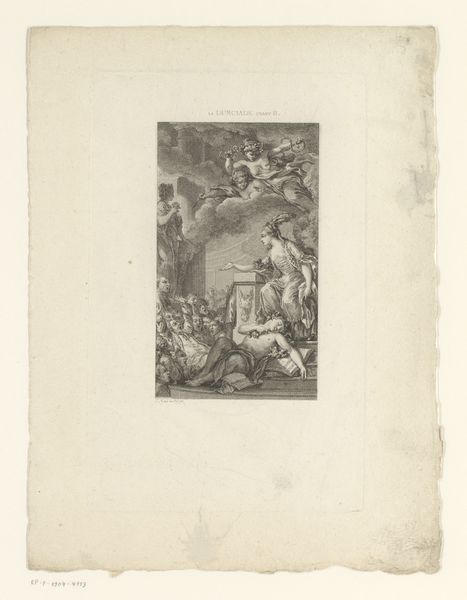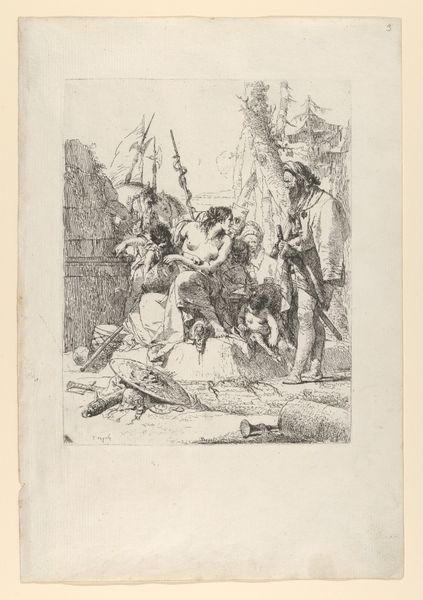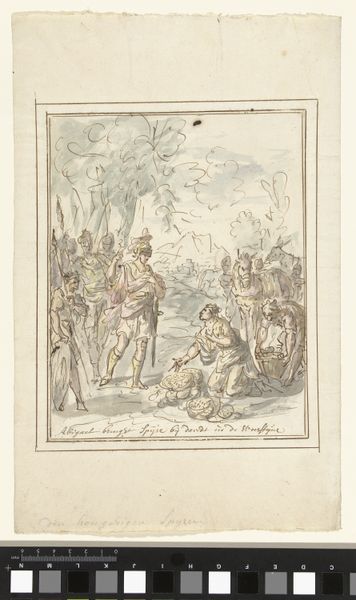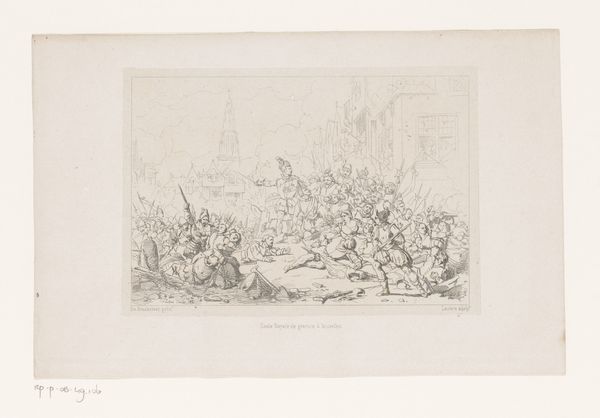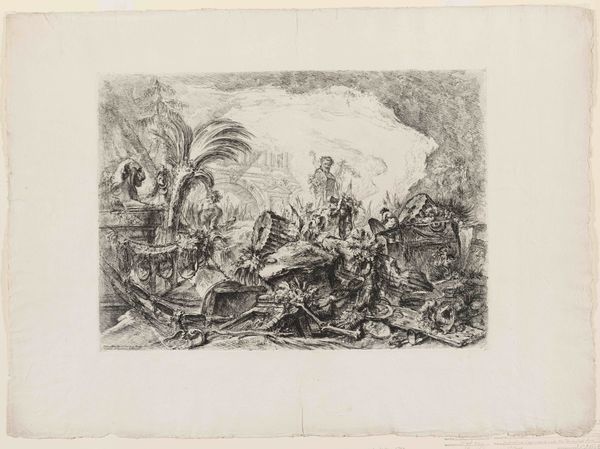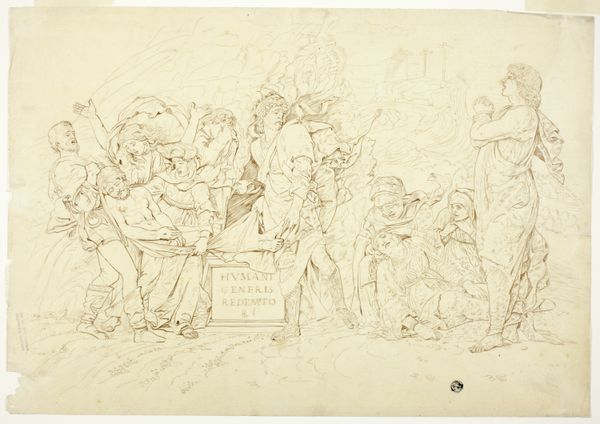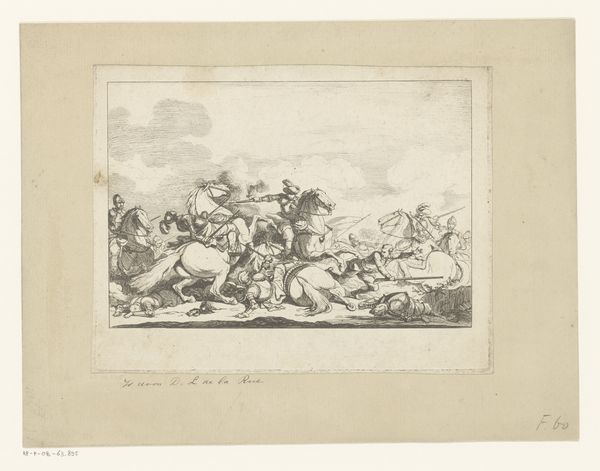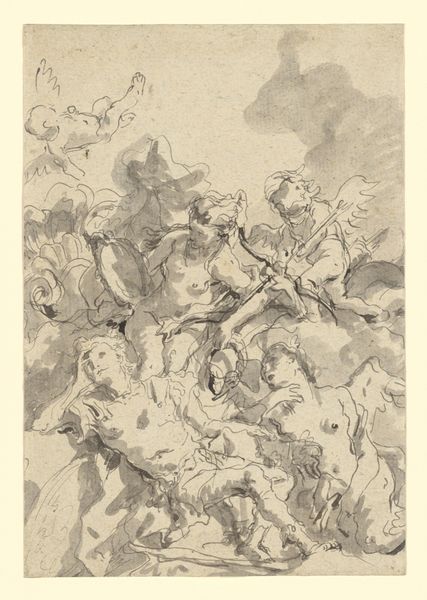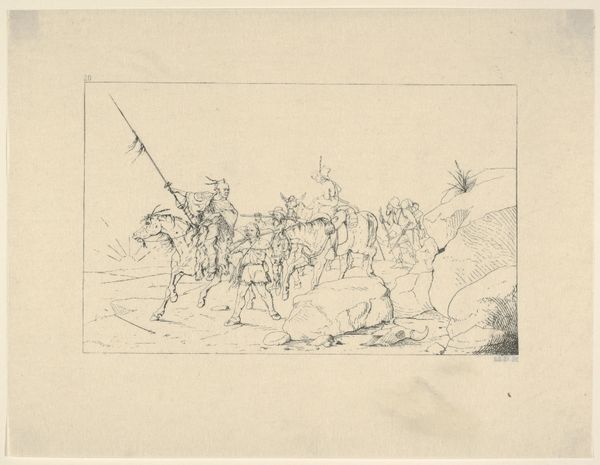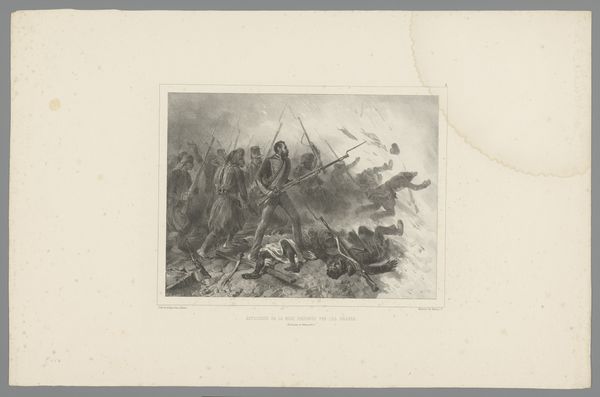
print, etching, intaglio, engraving
# print
#
pen sketch
#
etching
#
intaglio
#
old engraving style
#
pen work
#
genre-painting
#
history-painting
#
engraving
#
realism
Dimensions: height 145 mm, width 105 mm
Copyright: Rijks Museum: Open Domain
Editor: Here we have "Carnavalsvierders in Antwerpen," or "Carnival Celebrators in Antwerp," created in 1851 by E. Ritmeister. It’s an etching, engraving, an intaglio—a detailed print of a boisterous crowd. It’s so lively; a bit chaotic, actually. What catches your eye in this piece? Curator: Oh, the organized chaos, darling! It's a teeming microcosm of society, isn't it? Look at the way the artist uses line – frantic, almost manic – to capture the energy of the carnival. It’s not just a snapshot; it’s a feeling, a visceral experience rendered in ink. Do you get a sense of the sound? The music? Editor: Definitely! It feels like you can hear the commotion. But how much of that chaos is actually... purposeful? Curator: Ah, that's the eternal question, isn't it? Like life itself, there's always a dance between intention and happenstance. I see meticulous detailing mixed with these bursts of spontaneous mark-making. Ritmeister's control juxtaposed with the raw, unbridled energy of the event. Like composing music, there’s the structure of rhythm with a playful use of improvisational riffs. And is there a certain nostalgia embedded into the composition, almost reminiscent of history-painting? Editor: I didn't quite catch that the first time. It does remind you of other prints depicting city life from that time! Curator: It's a delicate balance, really. Ritmeister captures a moment in time but manages to simultaneously echo an old artistic feeling. Almost like dipping his pen in history and today at once. It speaks to how artists work through tradition while exploring their present world. It’s a constant source of inspiration. Editor: That’s a really interesting point; I'll need to remember to look for this blend of old and new when considering prints and engravings! Curator: And what did we learn about prints, ourselves, and 19th-century Antwerp along the way?
Comments
No comments
Be the first to comment and join the conversation on the ultimate creative platform.

